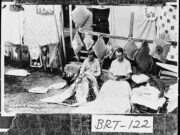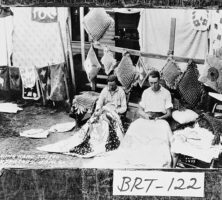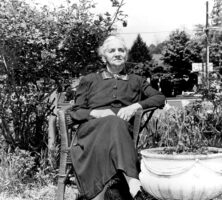Catherine Evans (later Catherine Evans Whitener) revived the handcraft technique of tufting in the 1890s near Dalton. Tufted bedspreads, which proved popular not only locally but also regionally and nationally, consisted of cotton sheeting to which Evans and (later) others would apply designs with raised “tufts” of thick yarn. These tufted bedspreads were often referred to as chenille products. Chenille, the French word for “caterpillar,” is generally used to describe fabrics that have a thick pile (raised yarn ends) protruding all around at right angles. Most tufted bedspreads did not meet the strict definition of chenille, yet the term stuck.
The handcraft of tufting played an important role in the economic development of northwest Georgia. Evans and others who learned the technique stamped familiar patterns onto blank sheets, then filled the patterns with yarn. As the products grew in popularity, merchants in the Dalton region took an interest in marketing the spreads. By the 1920s tufted bedspreads appeared on the shelves of department stores in Atlanta, New York, Philadelphia, and other major cities.
Merchants organized a vast “putting out” system to fill the growing demand. They established “spread houses,” usually small warehouses (or homes) where patterns were stamped onto sheets. Men called haulers would then deliver the stamped sheets and yarn to thousands of rural homes in north Georgia, Tennessee, and the Carolinas. Families then sewed in the patterns. The hauler would make another round of visits to pick up the spreads, pay the tufters (or “turfers,” as they sometimes called themselves), and return the products to the spread houses for finishing. Finishing involved washing the spreads in hot water to shrink them and lock in the yarn tufts. The tufted spreads could also be dyed in a variety of colors.
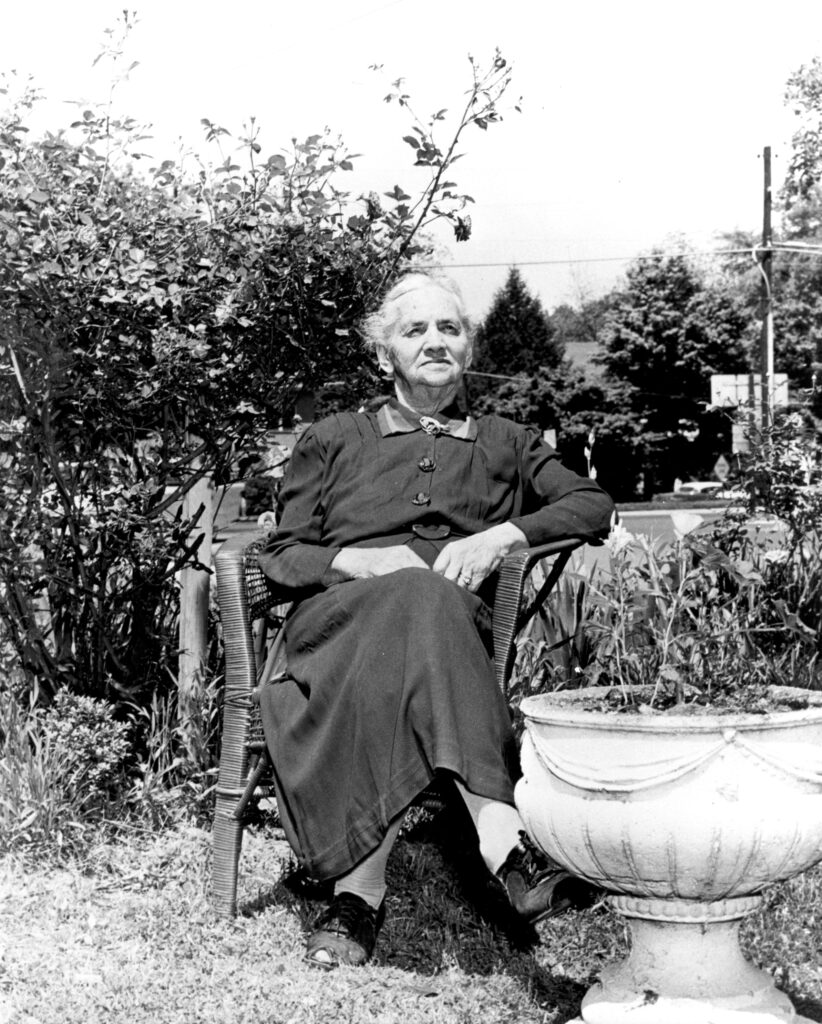
Courtesy of Shaw Industries, Inc.
By the 1930s clotheslines bearing chenille bedspreads lined U.S. Highway 41 through Dalton and other small communities in northwest Georgia. Tourists on their way to Florida often stopped and bought these spreads, sometimes believing them to be examples of authentic American folk crafts. Of the many designs adorning the spreads, the most popular among tourists was the peacock. This section of Highway 41 became known as “Peacock Alley” precisely because of the dominance of that design in the roadside displays. The participation of farm families in this industry provided badly needed cash incomes and helped these families weather the Great Depression. It also produced fortunes for some. Dalton’s B. J. Bandy (aided by his wife, Dicksie Bradley Bandy) was reputedly the first man to make $1 million in the bedspread business by the late 1930s, but many others followed.
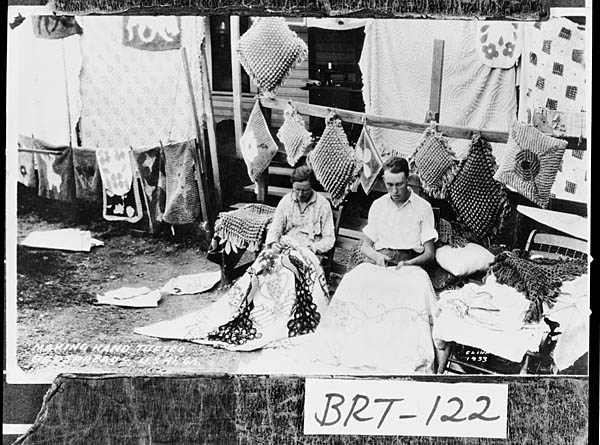
Courtesy of Georgia Archives.
In the 1930s such companies as Cabin Crafts began to bring the handwork from the farms into factories. The bedspread manufacturers sought greater productivity and control over the work process and were also encouraged to pursue centralized production by the wage and hour provisions of the National Recovery Administration’s tufted bedspread code. These new firms also began mechanizing the industry by adapting sewing machines to the task of inserting raised yarn tufts.
The industrialization of tufting raised productivity and created a booming local textile industry centered in Dalton. The remarkable success of tufted bedspreads led companies to experiment with other products, such as robes, tank sets (fuzzy covers for toilets), and small rugs. The experimentation with small rugs eventually led some of these companies to begin using the machine tufting process to cover an entire piece of room-sized (nine feet by twelve feet or so) backing material with raised yarn tufts to produce carpets. In the 1950s carpets surpassed bedspreads and other tufted products and became a staple of American consumption. Dalton remains the tufted bedspread capital of the world, but it also became the carpet capital of the world by the early 1960s.
Exhibits related to the old bedspread industry can be found at Crown Gardens and Archives in Dalton. Crown houses a number of bedspreads from the period, as well as other exhibits related to the history of the Dalton area.


